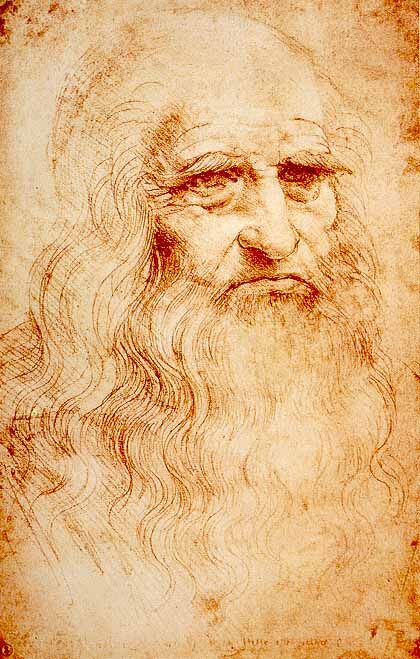At a time when the Christian religion used God as the source of explanation for all the phenomena around us, certain people, the humanists, challenged this vision of the world and created their own, placing Man at the centre of their concerns.

Michelangelo's Creation of Adam represents the vision of the Universe in the Middle Ages, which placed God at the centre of all concerns.

Michelangelo's David represents the Renaissance vision of the Universe, which places Man at the centre of its concerns.
In Europe towards the end of the Middle Ages, the vast majority of the population practised the Christian religion. This religion permeated every aspect of the daily lives of believers. According to these teachings, it was God who created mankind and everything that exists on Earth. Christianity has a vision of the world that places God at the centre of the Universe. Furthermore, the Christian religion explains the various events that occur in society (the coronation of a king, weather conditions, illnesses, etc. ) by claiming that it is God's will that is being done.
The interest that certain thinkers took in ancient texts was one of the causes of the Renaissance. Towards the end of the Middle Ages, a number of Italian intellectuals rediscovered writings from Greek and Roman antiquity. On reading these texts, they realised that the Christian religion had not always been at the heart of society and that it was perhaps not the answer to all questions. Humanist thinkers use their critical faculties to question the Christian religion. It is clear that the religious authorities of the time were totally opposed to this new movement, which criticised the place of God at the centre of the Universe.

Raphael's School of Athens represents the humanists' interest in Antiquity
Instead of believing in the Christian religion, which asserts that God is the explanation for everything that happens on Earth, some people will develop their own vision of the Universe. These people are called humanists. They believe that human beings are not at the mercy of divine will, but that they are in control of their own destiny. They also believe that, through critical thinking, reasoning and experimentation, it is possible to understand the world in which we live.

Work representing the place of Man in the Universe
Humanism emphasises thought, culture and art. To develop, we need to learn as much as possible about these 3 spheres. All this study also had to be based on ancient texts. This is why many scholars, complaining of being deprived of the knowledge contained in ancient texts, went in search of manuscripts, tried to restore the texts to their original state and had them recopied (or printed) to disseminate them more easily.
Humanism defined culture as the essence of Man, since culture brings wisdom, philosophy and morality. This era was marked by great confidence in human progress, civilisation, the ability to know many things, the diversity of possible talents, and so on. In short, this new vision of mankind and culture awakened artistic and scientific curiosity, which led to the development of many fields and to numerous discoveries and inventions. Humanism has also changed the way we think about education and learning.

Leonardo da Vinci's Vitruvian Man
Unlike the Christian religion, humanists place man at the centre of the universe. Their vision of the world is somewhat similar to that of the Greek philosophers of Antiquity. Here are some of the most important humanists of the Renaissance:
Didier Erasmus was a priest and another humanist born in the Netherlands. Despite being a priest, Erasmus denounced the ideas of the Church, which he believed to be corrupt. He is best known for his works Éloge de la folie, Adages and Colloques, and for helping to spread humanist ideas during his many travels throughout Europe.

Erasmus
Leonardo da Vinci is an important and highly representative figure of the Renaissance. His name is linked to the town where he was born: Vinci, a town near Florence. Da Vinci is a painter renowned for his famous Mona Lisa, but as well as being an artist, he is also a scientist, an architect, an engineer, an inventor, and so on. He was a true genius of his time.

Self-portrait by Leonardo da Vinci, painted around 1515

The Mona Lisa by Leonardo da Vinci
This Renaissance humanist denounced and criticised the Church for inciting violence during this period. Indeed, he disagreed with the fact that the Christian authorities put hundreds of people to death on witchcraft charges. Like other humanists of his time, Michel de Montaigne advocated the use of critical thinking to challenge medieval Christian values.

Michel Montaigne
Maingon, C. (2019, October 21). Leonardo da Vinci in 3 minutes. BeauxArts.https://www.beauxarts.com/grand-format/leonard-de-vinci-en-3-minutes/